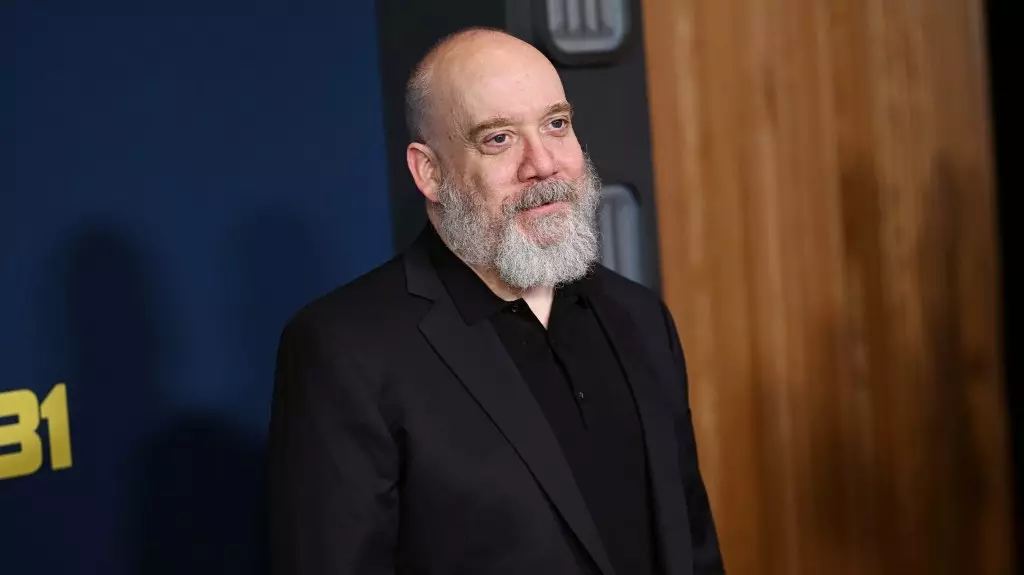The anticipated release of *Downton Abbey: The Grand Finale* has sparked both excitement and solemnity among fans, particularly following the passing of the beloved Dame Maggie Smith. Actor Paul Giamatti, who reprises his role as Harold Levinson, Cora’s brother, recently shared insights on the film’s significance and emotional weight in this context. His reflections not only remind us of the impact Smith had on the series but also underscore the inherent challenges of storytelling in the midst of loss. Giamatti’s comments reveal a profound respect for Smith, capturing the essence of what it means to create art that transcends individual contributions while being imbued with the spirit of those no longer present.
Giamatti expresses a bittersweet feeling surrounding the film’s production. His assessment that “it was not the same without her” encapsulates the void left by such a dynamic actress. Importantly, he indicates that the film endeavors to honor Smith’s legacy, suggesting that every frame is touched by her indelible mark. This notion echoes through the corridors of cinema, where the contributions of actors can resonate long after they leave the stage, perpetuating their presence through the works they helped create.
The Significance of a Surprising Reunion
Giamatti’s unexpected return to the *Downton Abbey* franchise is indicative of the show’s ability to weave a complex narrative that transcends initial character arcs. Initially unsure of the significance of his character when approached to participate again, Giamatti’s excitement underscores a fascinating aspect of narratology: characters, no matter how fleeting their appearances, can evolve into pivotal figures within a broader storyline. This speaks to the genius of Julian Fellowes, the series’ creator, who has a knack for recontextualizing minor roles into major narrative linchpins, demonstrating that every character—regardless of their on-screen time—can contribute meaningfully to the tapestry of the narrative.
The inclusion of Giamatti in *Downton Abbey 3* raises an essential question about character development and audience expectation. Viewers often bond with the main characters, forming attachments that make any additional characters feel secondary. However, it’s Giamatti’s charming quirkiness combined with a newfound eminent role that reignites interest in characters once seen as peripheral. His emphasis on the character’s critical actions in this installment reveals a thoughtful maneuver on the writers’ part to deepen viewers’ investment in the world of Downton.
Collective Grief and Tribute
The film’s narrative carries weights far beyond plot mechanics; it offers an exploration of collective grief among both characters and actors. Throughout his discussion, Giamatti hints at the poignant tribute laid out for Dame Maggie Smith. This element serves not only as an homage to the actress’s extensive contributions but also as a reflection of the grief experienced by those who worked alongside her. Gareth Neame, the executive producer, highlights a sentiment that the loss of Smith has imparted an added layer of authenticity to the story, wherein characters must grapple with mourning the family matriarch—a scenario that mirrors the reality of the cast.
This layered approach elevates the film into a resonant exploration of loss, creating an intimate experience for the audience who have followed these characters through trials, tribulations, and triumphs. By crafting narratives around grief and mourning, *Downton Abbey: The Grand Finale* does far more than serve as an entertainment vehicle; it becomes a communal therapy session—reminding audiences of the fragility of life and the precious memories we hold.
A Celebration of Art’s Enduring Power
Ultimately, *Downton Abbey: The Grand Finale* is more than an ending to a beloved series; it is an artistic journey honoring the longstanding impact of a cherished actress. Giamatti’s reflections encapsulate the bittersweet juxtaposition of art and life, suggesting that even in loss, there exists an opportunity for renewal. As audiences flock to theaters, they will not only celebrate moments long etched in the collective memory of *Downton Abbey* but also honor the woman who played a pivotal role in its success.
Through Giamatti’s words and the film’s thoughtful homage, viewers will likely walk away with a deeper understanding of the emotional complexities involved in bringing such stories to life. Art, in this case, is not a mere reflection of reality; it becomes a living organism that adapts, mourns, and celebrates in the face of time and change. And as it carries on, so too does the spirit of Dame Maggie Smith, eternally woven into the very fabric of this grand narrative.
